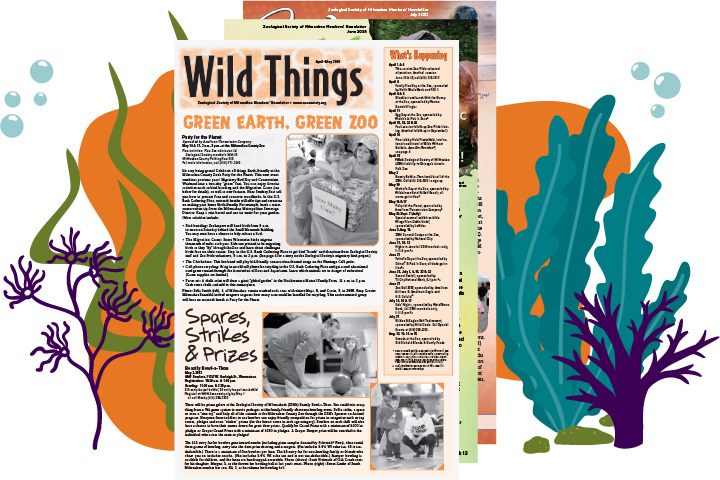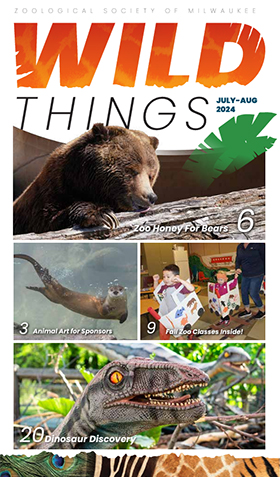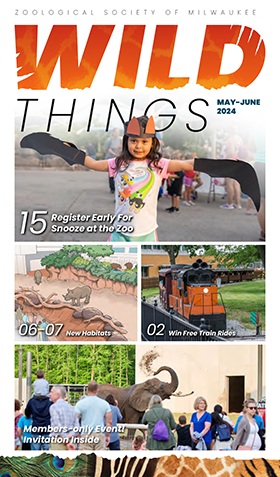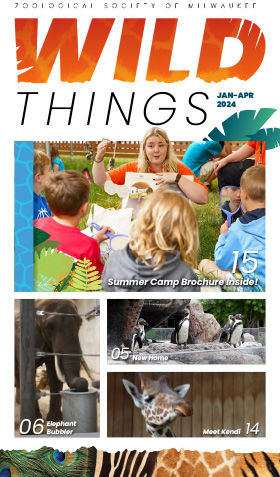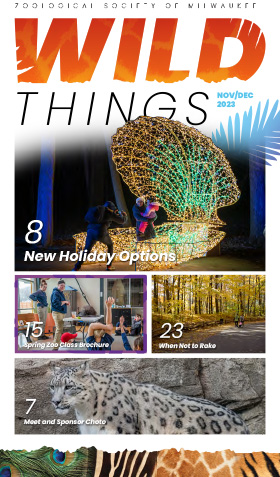Wild Things Newsletter
Wild Things Newsletter
Wild Things is our member newsletter published in January, May, July, September and November. It keeps our members informed on upcoming events, new animals at the Zoo, education programs, sponsorship opportunities and more. It also takes you behind the scenes with animal info and keeper profiles. It has been published since December 1995 by the Zoological Society’s communications team with the help of the Zoo’s and Society’s events teams, educators, zookeepers and other staff.
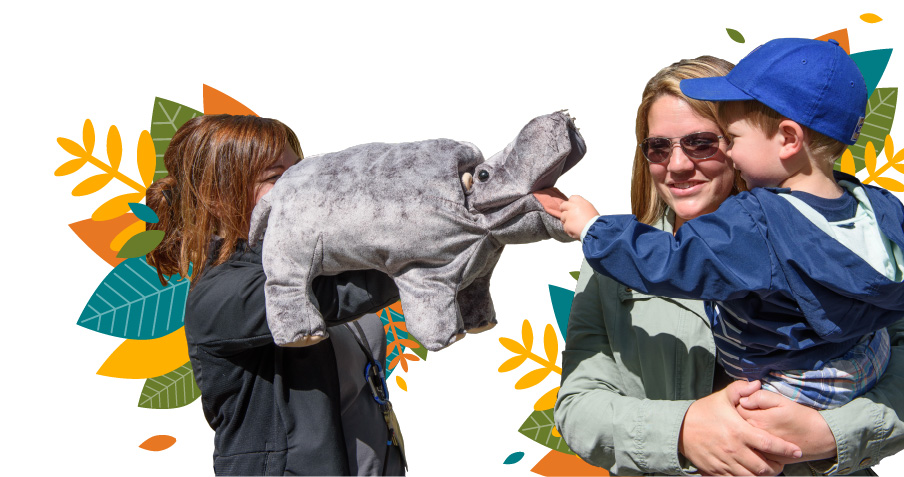

Catch Up with Our Latest Editions
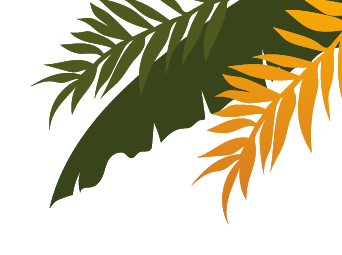
July-August 2024
In this issue of Wild Things, you’ll learn more about upcoming Zoo and Society events, such as Kids Nights, sponsored by WaterStone Bank; A La Carte at the Zoo, presented by Meijer; Animal Safari and more. Read exciting stories from around the Zoo, including a look at the relationship between bees and bears at the Zoo, a spotlight on the new-look interpretive signs and a look at how the camels shed their winter coats.
May-June 2024
This issue previews upcoming Zoo and Society summer events and features a glance at the 2024 special exhibit, Dinosaur Discovery, sponsored by Sendik’s Food Market. This issue also contains exciting stories from around the Zoo, including how the Zoo’s new male western lowland gorilla, Azizi, is settling in.
January-April 2024
In this issue, you’ll learn about upcoming renovations to the Zoo’s Humboldt penguin habitat. You’ll also meet the Zoo’s new male giraffe, Kendi, and find out how zookeepers keep the elephants hydrated. Be sure to check out the summer camp brochure in this issue for camp offerings and registration details.
November-December 2023
This issue is a page-turner with insights into the Zoo’s newest members: Choto, the snow leopard, and Nelson, the Norwegian Fjord horse. Plus, we’re shining a spotlight on some unique animal species, like the rhinoceros hornbills and koi fish. As the holiday season approaches, we’ve included Zoological Society-themed gift ideas that will make your holiday shopping a breeze.

Wild Things Newsletter Archive
Check out issues of Wild Things dating all the way back to 1995. You can reminisce about events of the past and previous generations of animals at the Milwaukee County Zoo.
